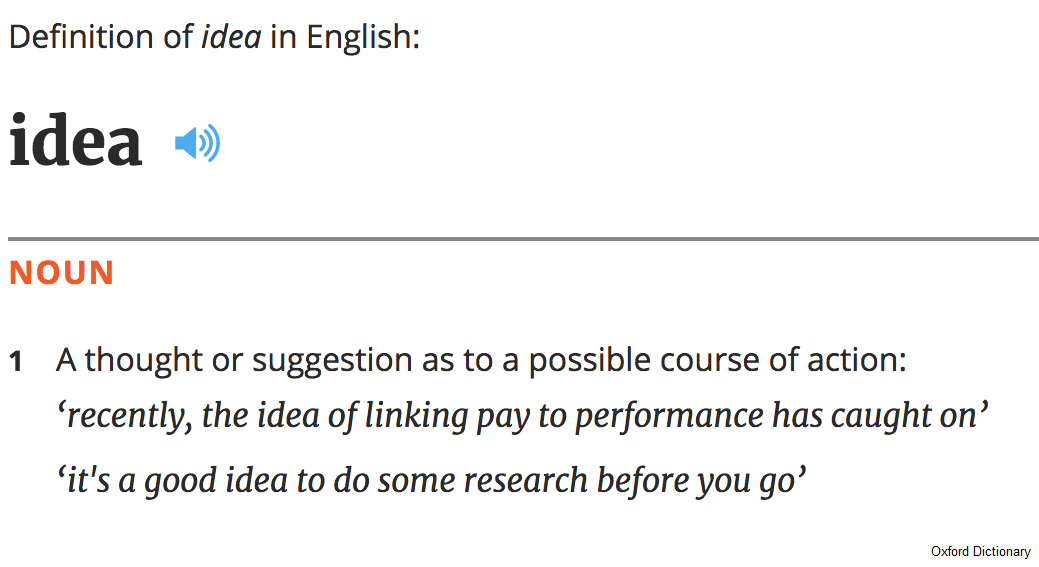I have spent much of my time since my last blog post formalizing my PhD proposal – complete with ideas and plans for thesis chapters. For me, this will likely be five core chapters: a conceptual review which integrates ideas that underlie the rest of my thesis, followed by four chapters of empirical data. Some of the ideas that make up these chapters have been rattling around in my brain for a few years, while others were conceptualized and refined in recent months after reading new literature and chatting with colleagues, lab-mates, and my supervisor. And that is what I’d like to write about today: ideas. According to the Oxford Dictionary an idea is, “a thought or suggestion as to a possible course of action.” This definition implies that ideas are action-oriented – in the case of graduate studies, our ideas are the blueprint that guides our data collection, analysis, and ultimately the structure of a thesis.
Graduate studies is an amazing opportunity to come up with our own ideas for our projects, or if the framework for the idea exists, to manipulate it and contribute to its evolution. While these opportunities are a key part of a challenging and rewarding graduate degree experience, this process can often be quite difficult. We often think of developing skills as taking a course or a tutorial, as is the case for “hard” skills, such as learning statistics or other (quantitative or qualitative) methods. Learning how to conceive, select, and refine ideas and foster their growth, however, is a meandering, convoluted process that takes time and effort. While we put a lot of emphasis on our own abilities to produce research ideas, some of the best sources for idea inspiration come externally from reading academic papers and books, listening to peers in seminars or at conferences, and attending discussion groups or journal clubs. Two ways of growing and developing ideas that have worked for me are: 1) reading, reading, reading! and 2) discussions with academic colleagues and peers.
Academic journal articles and books are full of great ideas that are waiting to be explored and the best part is that they are not always obvious to everyone who reads them. Whether it’s a chapter in a book, a paragraph in a paper, or even a sentence, interesting ideas are often buried in these texts. Often, authors simply mention something offhand; something they may not have necessarily considered particularly interesting or compelling at the time, but something that could turn into a great idea ready to be explored further. I see this as analogous to the idiom: as they say, “one person’s trash is another person’s treasure.”
For example, I was inspired by the section header “Environmental variability and uncertainty” and subsequent sentence: “The social environment can often be considered a reflection of the ecological environment” in a recently published academic article. The specific section and sentence of this article inspired me to explore and develop this idea further, and now it’s the basis for one of my thesis chapters.
The fact these ideas exist is one thing, but finding them is another. We might find a suggestion or question that seems promising, but fostering that idea toward a fully formed project or paper can be full of unexpected surprises. One way to figure out if an idea you’ve discovered in an article or book sentence is worth pursuing is to follow up in the literature to see if anyone else felt the same way as you. If there’s a citation at the end of the sentence or within the paragraph, read that paper too. If not, read nearby citations and follow up by searching key words from the sentence in your favourite scholarly search engine.
Another thing that has helped me transition ideas from thoughts to projects is through simply talking to peers and colleagues. These conversations can fuel the evolution of your ideas over time and can even lead to collaborations or jobs in the future. Importantly, these ‘water cooler’ discussions can help develop, refine, and clarify questions. Conversations with colleagues can take a research idea from thoughts, to proposals, to data, to thesis chapters or articles. There is no such thing as a ‘bad idea’ – only unrefined research questions waiting to be developed.
As students, the ideas we develop during our graduate programs are cultivated over relatively long periods of time and we typically invest a lot of energy into them. So, as we move on to the next stage it is important to ensure our ideas and idea-generating skills don’t fall by the wayside. As many of us remain in the same general fields after our degrees, we can take what we’ve learned and take what we’ve thought about and apply it elsewhere. For example, during a master’s degree you might have a great idea that could be fostered during a doctoral degree. Alternatively, that great idea could be applied in a specific context in a non-academic job after you’ve graduated. Communicating your ability to develop and integrate ideas is critical and the initiative that comes along with idea development is a valuable asset.
In summary, creativity is key. Integrating multiple ideas, possibly even from multiple (sub)disciplines, in creative and novel ways is the goal. Over time, as we familiarize ourselves with the literature in our respective disciplines we accumulate ideas, the ability to develop and propose good ideas may become easier, but, just like anything, it takes practice. Never underestimate the value of pieces of information that inspire you (no matter how small they are), or the insights and contributions that can be shared through casual conversations. Remember, since ideas are action-oriented, they are always a work on progress.
Until next time…
~Quinn zp-pdl.com
